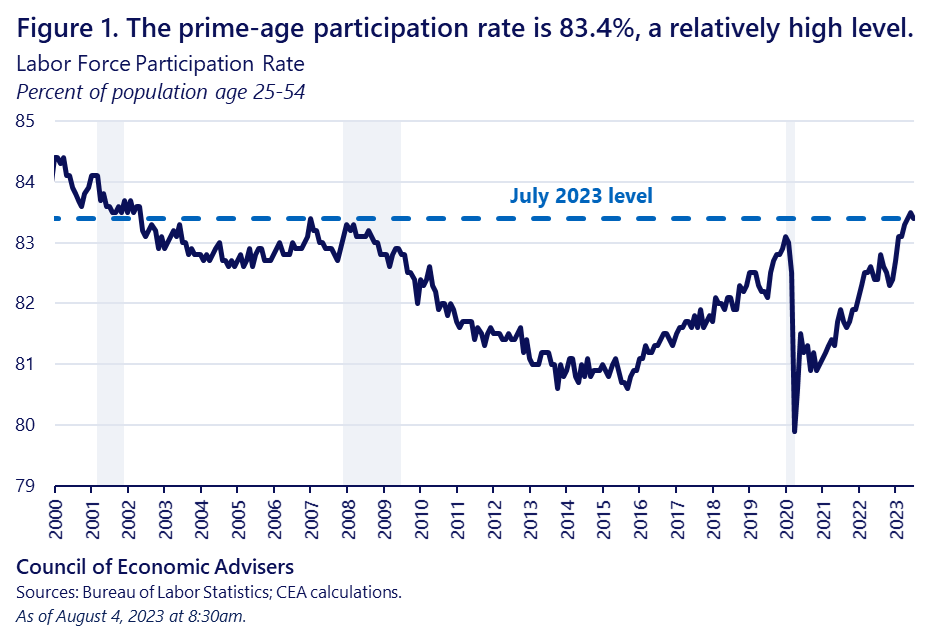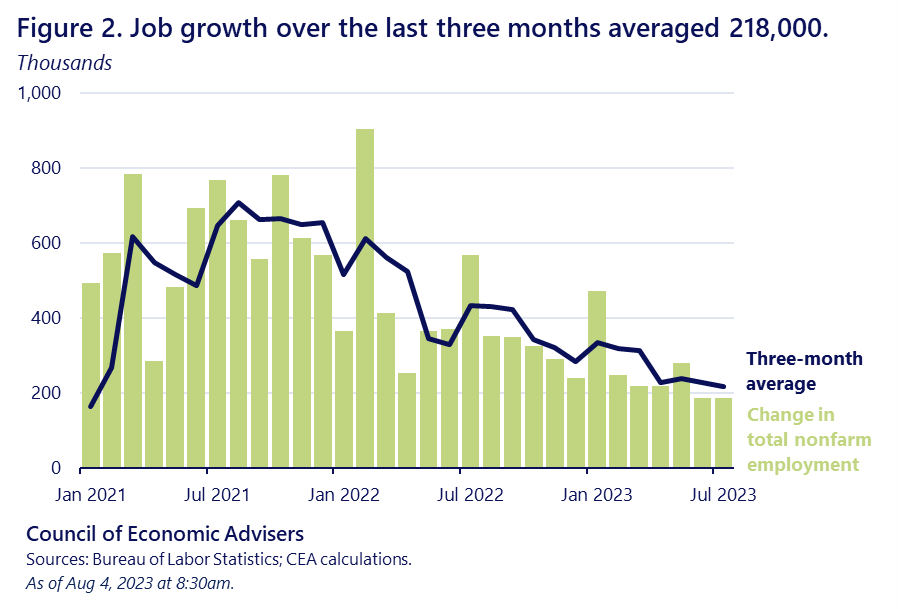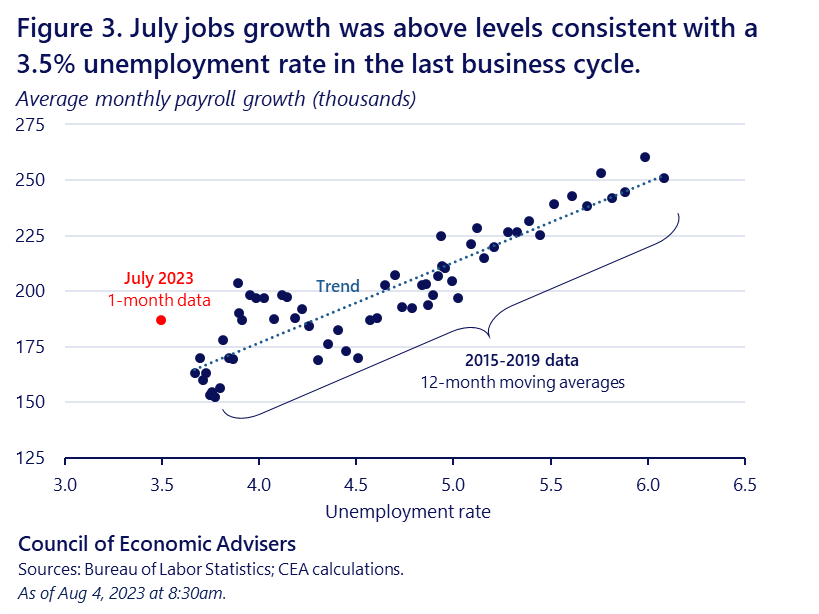The Employment Situation in July: Seeing the Picture from the Dots
Jared Bernstein, Chair of the Council of Economic Advisers
Payrolls were up 187,000 in July and the unemployment rate ticked down from 3.6 to 3.5 percent. The report shows the U.S. labor market to be cooling in expected and necessary ways while maintaining historically low levels of slack, with unemployment below 4 percent for a year and a half.
One of the challenges with the monthly jobs report is putting numbers in their larger, historical context. The data are akin to the points in the paintings of impressionist painter Georges Seurat. One dot, like one data point, does not reveal much until you place it in context, at which point you hopefully get a clearer picture.
Here are the highlights (or “dots”) from today’s report:
- Payrolls were up 187,000 last month, or 218,000 on average over the past three months, a healthy pace of job gains at this stage of an expansion.
- Unemployment ticked down overall and for Black workers; it fell significantly for Asian workers. The Asian rate fell to a post-pandemic low of 2.3 percent. The Hispanic rate was 4.4 percent, close to historical lows.
- The overall labor force participation rate held steady at 62.6 percent. Economists focus on prime-age workers (25-54 years old) to avoid the effects of population aging (see this post for details). Prime-age labor force participation ticked down but remains relatively high and 0.4 percentage points above its prepandemic rate.
- Construction and private education & health services (with notable contributions from health services) continue to contribute to employment gains.
- Wages, before adjusting for inflation, grew 0.4 percent in July and 4.4 percent over the past year. That is an elevated pace of wage growth relative to the prepandemic norm and the same pace as in June.
Putting the gains in context: Plots of dots!
In July 2022, the job market added 568,000 jobs. Such a torrid pace of job creation made sense then as the labor market was still climbing out of the deep hole dug by the pandemic-induced recession. But as recoveries accelerate, and consumers and investors recover from a downturn, job gains can climb steeply and unemployment can fall sharply. This was especially the case after the initial pandemic shock, when so many people had left the labor market. During this period, gains in labor force participation were some of the sharpest on record (see Figure 1).

Figure 2 shows a smoother, three-month average trendline illustrating that since early 2022, job gains have steadily slowed. But how can we tell if this deceleration signals that job gains are slowing too much, as opposed to achieving a sustainable equilibrium?

One way to do so is with dots! In Figure 3 below, the dots in the scatterplot represent the intersection of average monthly payroll gains (y axis) and the 12-month moving average of the unemployment rate (x axis). The figure uses data from the end of the last business cycle (2015-2019) to avoid pandemic distortions. As unemployment falls so too does the average number of monthly job gains. The red dot, taken from today’s report, shows the intersection of 3.5 percent unemployment and 187,000 jobs. The fact that this dot is above the trend line underscores the point that July’s gains were actually above what we would expect by this metric.

In May 2022, President Biden argued in a Wall Street Journal op-ed that the U.S. could transition from recovery to stable, steady growth, lowering inflation without giving up historic job gains. He argued:
During this transition, growth will look different. We will likely see fewer record job-creation numbers, but this won’t be cause for concern. Rather, if average monthly job creation shifts in the next year from current levels of 500,000 to something closer to 150,000, it will be a sign that we are successfully moving into the next phase of recovery—as this kind of job growth is consistent with a low unemployment rate and a healthy economy.
With annual inflation (measured by the consumer price index, or CPI) now down over two-thirds from its peak over a year ago, and the job market still historically tight, we appear to be on point. Our work is not done and we will continue to build on this progress. The CEA will continue to provide context for the data—and the dots—as they come in.

